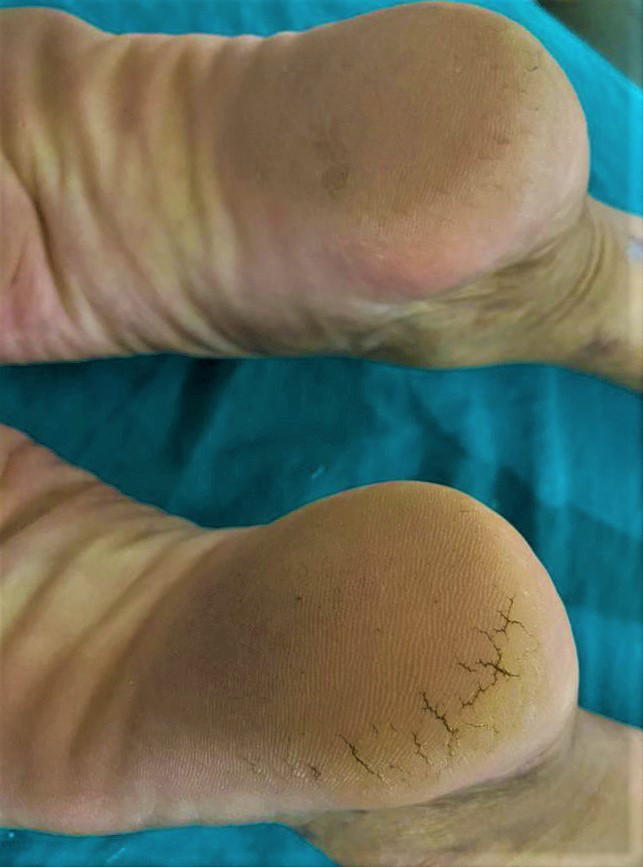Translate this page into:
Novel use of trichloroacetic acid in deep heel fissures
Corresponding author: Dr. Priya Kapoor, Department of Dermatology, Sri Guru Ram Das Institute of Medical Sciences & Research, Amritsar, Punjab, India. kapoorpriya2492@gmail.com
-
Received: ,
Accepted: ,
How to cite this article: Kapoor P, Kumar S, Brar AK, Kaur J, Bhatia V. Novel use of trichloroacetic acid in deep heel fissures. Indian J Dermatol Venereol Leprol 2023;89:783-4
Problem
Heel fissures are a common dermatologic condition characterised by disruption in the epidermis which extends to the dermis. These occur because of dry and hyperkeratotic skin, barefoot walking, use of backless shoes, plantar keratodermas or systemic diseases. 1 Deep fissure can result in pain, bleeding and affect mobility. The usual therapeutic modalities for plantar fissures include emollients and keratolytics. They require frequent applications for a prolonged period and are ineffective occasionally in deep, recalcitrant fissures.
Solution
We describe a novel treatment of recalcitrant deep heel fissures with trichloroacetic acid. A higher concentration of trichloroacetic acid (>50%) causes coagulation necrosis up to the reticular dermis resulting in a localised wound that heals with secondary intention. 2 We utilised this attribute of trichloroacetic acid for the treatment of deep heel fissures [Figure 1]. The sharp end of a wooden toothpick was used to apply trichloroacetic acid (100%) to the opposing margins of the fissures till a faint white frost was achieved. Single application of the chemical resulted in significant improvement at three weeks [Figure 2]. No appreciable side effects were observed immediately and during the follow-up period. Repeat application can be done at three weeks if required. The patient can subsequently be maintained on bland emollients after the fissures resolve to prevent a recurrence. Trichloroacetic acid is an easily available, cost-effective and efficacious modality for the treatment of recalcitrant deep heel fissures.

- Deep fissures on the heel at baseline

- Satisfactory improvement seen at 3 weeks of follow-up after TCA application
Declaration of patient consent
The authors certify that they have obtained all appropriate patient consent.
Financial support and sponsorship
Nil.
Conflict of interest
There are no conflicts of interest.
References
- A review of cyanoacrylate liquid skin protectant and its efficacy on pedal fissures. J Am Col Certif Wound Spec.. 2011;2:79-85.
- [PubMed] [Google Scholar]
- Chemical reconstruction of skin scars therapy using 100% trichloroacetic acid in the treatment of atrophic facial post varicella scars: A pilot study. J Cutan Aesthet Surg. 2013;6:144-7.
- [CrossRef] [PubMed] [Google Scholar]






